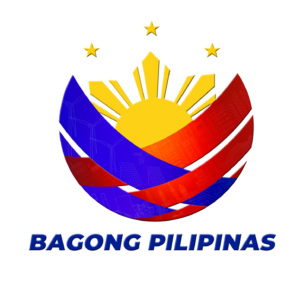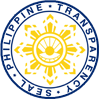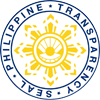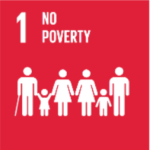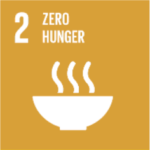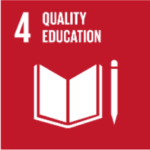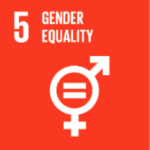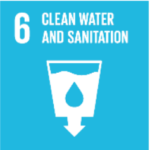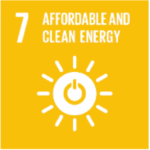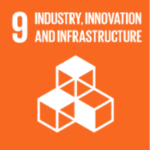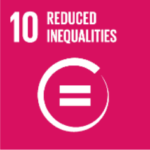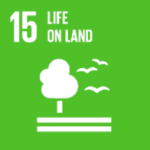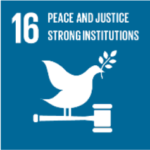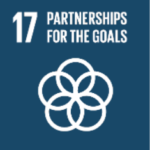SDG 4 - QUALITY EDUCATION
The relationship between education and poverty is quite clear; educated people have higher earning potential and are better able to improve the quality of their lives, which means they are less likely to be marginalized within society at large. Education empowers a person, helps them become more proactive, secures firm control over their lives, and widens the range of available options (UNESCO 1997). Apayao State College (ASC), as a Higher Education Institution in the country, is committed to contributing to the attainment of SDG 4: Quality Education. The P/A/Ps under this SDG include the following
Higher Education Research Category
Jassel C. Batara and Rema B. Ocampo
ABSTRACT
This study aimed to assess the attitude towards reading and reading abilities of Grade 1 pupils of the multi- grade schools in the Pudtol District Division of Apayao. Results showed that majority of the respondents are aged 6, males, in a family 6, third child in the family, with fathers who are into farming and mothers into housekeeping, Isneg and Isnag speaking, using cellphones, and Roman Catholic. The Grade 1 pupils were able to accomplish orientation print, letter name knowledge, letter and initial sound. However, more pupils were not able to perform familiar word reading, invented word decoding, oral passage reading and comprehension, listening comprehension and dictation; the pupils have positive attitude towards reading. Findings also showed that there is no significant relationship between the profile of the pupils and the attitude towards reading. Furthermore, there is no significant relationship between the attitude of the pupils and reading abilities of the pupils along with the different components of EGRA.
Luningning B. Aribbay
ABSTRACT
This study was conducted to determine the Mathematics Attitudes and Mathematics Performance of the 34 Grade IV Pupils at Mataguisi Elementary School at Pudtol District, Division Apayao, School Year 2017-2018. The Researcher made use of the descriptive survey method and correlational-type of research. Results showed that the pupils at have favorable attitude in Mathematics and their Mathematics performance is Approaching Proficient. Furthermore, the Mathematics performance of the respondents showed that there is a significant difference on the Mathematics Performance of the pupils and the mathematics attitude of the grade IV pupils does not affect their Mathematics performance.
Ronald O. Ocampo
ABSTRACT
This study aimed to find out the effectiveness of Jigsaw strategy on Students’ Attitude towards Mathematics. The Quasi Pretest- posttest design was used. The main research instruments used in the study were the Attitude Scale Inventory and a 75- item multiple choice having a reliability coefficient of 0.82. Data were statistically analyzed using mean, standard deviation and the t-test for independent means. Results revealed that enhanced students’ attitude towards mathematics and their academic achievement.
Luningning B. Aribbay
ABSTRACT
The study aimed to document the Indigenous Mathematical Concepts of the Isnag people of Calanasan, Apayao. Specifically, it aimed to determine mathematical concepts related to measurement, counting, geometry, and other related fields in math and identify indigenous knowledge on weather prediction and calendar of the Isnags in relation to mathematics. The researcher made used of the descriptive survey method of research with Key Informant Interview, Observation, and Focus Group Discussion. Results showed that there are two indigenous mathematical concepts related to time/calendar (Identifying time and Months of the year), five concepts related measurement (measuring harvest, measuring length, measuring height, measuring volume, area and weight, and measuring and estimating distance), one concept related to direction (identifying location/direction), one concept related to counting (terms for counting numbers), one concept related to fraction (terms for selected fractions), one concept related to geometry (terms for selected polygons and shapes), one concept related to color (terms for selected colors), and one concept related to weather (determining the weather forecast).
Agustina G. Pattung
ABSTRACT
The study determined the challenges experienced in online education by graduate school students of ASC Conner Campus during the SY 2020-2021. It employed descriptive survey method of research. There were 70 MPA and MAEd students who served as respondents of the study. Findings revealed that the Graduate School is dominantly with female students and full time MAEd -EM students for SY 2020-2021. The most commonly used ICT gadgets used in online classes were smartphones. The respondents used mobile data, pocket wifi and home WIFI in the conduct of their classes with at least stable connection provided the weather condition is also favorable. The students have access online materials like uploaded power points, e copy of handouts and reading materials, online materials in links and articles and audio-video clips. There are more students who spent 1-3 hours in online classes during Saturday with 47 or 67.14% students while on Sundays, there are more respondents who spent 4-6 hours in online classes. The respondents showed preparedness, eagerness, interest and focus in online classes. Various technologies were used, accessed by the respondents with smartphones and attended classes using Google Meet and Zoom, communication in group chats and google classroom. Challenges experienced with online education were along ICT use and skill, ICT infrastructure, knowledge in online education/ strategies/ methods and internet connectivity. The adaption on use of new technologies, faculty development interventions, flexible learning, improvement of ICT skills and knowledge and importance of ICT infrastructure were identified as opportunities in online education.
Marfred T. Sanchez, Ruth A. Tumaneng, Shane Pearl Lae S. Español
ABSTRACT
This study used a descriptive phenomenological approach to identify problems encountered by teachers and students, as well as possible solutions, in the implementation of modular distance learning. The study was conducted among the BEEd teachers and students of Apayao State College – Luna Campus. Four (4) BEEd program mainstay teachers and ten (10) BEEd students were approached to request their voluntary involvement as key respondents to the study. The respondents were chosen using convenience sampling and then interviewed individually via video conference to learn more about their experiences as a data-gathering tool. Data were analyzed using a thematic analysis approach to find any patterns in the responses of the respondents by transcribing, organizing, and coding them. Findings revealed that teachers identified four (4) themes of problems related to the preparation of printed learning materials; management in the distribution of printed learning materials; retrieval of students’ activities and outputs; and checking of students’ activities and outputs. Students also identified two (2) themes of the problems they had with the submission of their activities and outputs, as well as their capability to learn independently. School administrators can use the findings of this study to develop interventions, programs, and activities to address issues that arise during the implementation of the modular distance learning modality.
Ruth A. Tumaneng, Maynalyn Mariano & Rheem Galut
ABSTRACT
This study developed and validated Strategic Intervention Materials for teaching selected topics in Grade Six Science. The SIM consisted of six sets of lessons, which were based on the Philippine Elementary Schools Learning Competencies and K-12 curriculum. The SIM in Science VI is a teaching material that make learning clear, and easily comprehensible to the learners. The SIM consists of five components: guide card, activity card, assessment card, enrichment card, and reference card which are found in each set.
The ten (10) panel of experts who content-validated the SIM composed Elementary Science teachers of Pudtol, Luna, and Sta. Marcela, Apayao. Using a five point scale checklist, the SIM was evaluated in terms of objectives and instructional characteristics. The scale of responses was based on Tuckman’s scale. The data gathered from the content –validation were analyzed using the descriptive statistics.
Results indicated that the teacher- respondents degree of agreement on the developed instructional material is high as shown in the computed grand mean of 4.58 with its verbal description of highly valid.
Keywords: strategic intervention material, Philippine Elementary Schools Learning Competencies (PESLC)
Ronald O. Ocampo and Sonia A. Belarde
ABSTRACT
This study aimed to assess the code-mixing patterns used in Ilocano conversations. Specifically, it is intended to: identify through documentation of code- mixed Ilocano language used in conversations. Based on the findings, data and information gathered by the researcher, the following conclusions were drawn: Students of Apayao State College speak a Mongol variety of Ilocano language with borrowings from the English Language; Students find easier to pick the English counterpart of an Ilocano word file lexical gaps in one of his/her languages; There are several prefixes used before certain verbs in English to indicate present, past and future actions such as maka, iy, i, ag, ma [present]; naka, nag, and na[past]; and mak, iy and i, ag and ma [future]; and Prefixes for present and future tenses are the same. There are only signal words used to indicate only signal words used to indicate futurity such as nakto, inton bigat (will – tomorrow).
Keywords: Language, grafting, code mixing patterns
Raymond D. Garcia
ABSTRACT
Thus, teachers should give students opportunities to show what they know through varied and frequent assessments. Various types of mathematics assessments give teachers a clearer picture of how their students are progressing. Teacher are encouraged to attend seminars and trainings on teaching strategies and interventions to improve their teaching methods and should provide focused and targeted feedback to their students.
Keywords: Academic achievement, Grade 11 students, descriptive research
Ariel M. Alcones and Angelyn D. Ladera
ABSTRACT
This study was conducted to determine the acceptability of worktext as a learning modality for the learners of Apayao State College (ASC) in the new normal. wherein a survey was conducted to students enrolled for 1st semester, SY 2020-2021. A researcher made questionnaire was administered through interviews with the respondents who were present during the survey. The acceptability of the worktext as an offline modality of instruction was determined the acceptability in terms of suitability, satisfaction, quality, and adequacy. In general, the worktext as an offline modality of instruction is acceptable to the students. Specifically, the work text is acceptable in terms of its suitability, slightly acceptable in terms of student satisfaction, acceptable in terms of quality, and slightly acceptable in terms of its adequacy. Based from this action research, a depth study may be done to determine the factors that may have contributed to the students’ responses and also an evaluation of the individual worktexts be conducted for validation and reliability measures.
Keywords: Learning modality, worktext, Apayao State College
Jaybee B. Omaweng
ABSTRACT
The study aimed to determine the clients’ satisfaction with the Students Affairs and Services of Apayao State College. A qualitative approach was used to determine the best practices, problems encountered, suggestions to improve the SAS programs and the proposed Comprehensive SAS Plan while the quantitative aspect dealt with the clients’ degree of satisfaction of the SAS program. Majority of the participants were students followed by the faculty, administrators, and administrative staff from ASC, Luna Campus. Results of the study revealed that the SAS of the ASC manifests efficiency in the delivery of its programs and its services to the students as reflected by its high rating on the degree of clients’ satisfaction with its services. The high degree of satisfaction on the SAS services is a manifestation of the quality delivery of the SAS programs. It is recommended that SAS personnel must sustain their practices in the delivery of the services and programs of their respective service units; may consider the findings of the study in improving the SAS systems and processes; disseminate the results of the study to the ASC administration and the personnel of the various SAS units; and cooperation of SAS personnel for the incorporation of findings in the proposed Comprehensive SAS Program.
Keywords: Client satisfaction, SAS, qualitative, ASC
Madelyne Tuluan-Maslang, Kenneth Amangao, Redgie F. Tamacay, Yolanda B. Dalingay
ABSTRACT
In many parts of the country, rates of COVID-19 continue to be of concern; many of us may still be in areas with guidelines that prohibit large social gatherings and that encourage us to stay at home. In other parts of the country, rates of COVID-19 are stabilizing or on the decline, and we may be starting to feel more comfortable resuming some non-essential activities outside of the home. No matter where we are along this spectrum, we need determine ways on how to adapt to the new normal that we are facing. With Apayao State College transitioning to a new modalities of learning it is important to know how students of this institution can adapt to the new normal. Thus, the study on the Apayao State College Student Adaptation to the New Normal Education Situation was developed. In order to get the desired output of the study, the researcher came up with a descriptive survey questionnaire to determine the adaptation capacity of the participants when grouped according to variables and be able to extract recommendations or suggestions of the participants with regards to their adaptation to the new normal education situation
Keywords: Students adaptation, new normal, new modalities
| SY | 2nd Semester 2021-2022 | 1st Semester 2022-2023 | ||
| Campus | College-Wide | Campus | College- Wide | |
| Conner | 3733 | 4217 | ||
| Graduate School | 140 | 133 | ||
| Undergraduate | 1093 | 1365 | ||
| SHS | 0 | 102 | ||
| Luna | ||||
| Graduate School | 89 | 103 | ||
| Undergraduate | 2324 | 2616 | ||
| Academic Program/ Department | Luna | Conner | Total |
| Master of Arts in Education | 12 | 12 | 24 |
| Master in Public Administration | 1 | 6 | 7 |
| Bachelor of Science in Agriculture | 41 | 8 | 49 |
| Bachelor of Elementary Education | 28 | 9 | 37 |
| Bachelor of Secondary Education | 74 | 39 | 113 |
| Bachelor of Technical Teacher Education | 7 | 5 | 12 |
| Bachelor in Civil Engineering | – | 0 | 0 |
| Bachelor of Science in Forestry | 20 | – | 20 |
| Bachelor of Science in Hotel and Restaurant Management | 48 | 12 | 60 |
| Bachelor of Science in Business Administration | 85 | 10 | 95 |
| Bachelor of Science in Information Technology | 51 | 24 | 75 |
| Bachelor of Science in Industrial Technology | – | 10 | 10 |
| Senior High School | – | 173 | 173 |
| TOTAL | 367 | 308 | 675 |
| Total Number of Graduates in 2020 | Employed | Unemployed | Not tracked | Percentage |
| 265 | 208 | 49 | 7 | 78.49% |
| PROGRAMS | COPC NO. | DATE OF EFFECTIVITY |
| Luna Campus | ||
| Bachelor of Elementary Education | No.22, Seriesof2019 | March 11, 2019 |
| Bachelor of Technical Teacher Education (Garments Fashion and Design; Automotive Technology: and Food Services Management) | No.23, Series of 2019 | March 11, 2019 |
| Bachelor of Secondary Education (English, Mathematics, Social Studies) | No.24, Series of 2019 | March 11, 2019 |
| Bachelor of Science in Agriculture (Animal Science & Crop Science) | No.28, Series of 2019 | March 11, 2019 |
| Bachelor of Science in Forestry | No. 30, Series of 2019 | March 11, 2019 |
| Bachelor of Science in Information Technology | No. 31, Series of 2019 | March 11, 2019 |
| Bachelor of Business Administration (Marketing Management) | No. 34, Series of 2019 | March 11, 2019 |
| Bachelor of Management Science in Hospitality | No. 08, Series of 2021 | July 14, 2021 |
| Conner Campus | ||
| Bachelor of Technical Teacher Education (Garments Fashion and Design; Automotive Technology: and Food Services Management) | No. 25, Series of 2019 | March 11, 2019 |
| Bachelor of Secondary Education (English, Mathematics, Technology & Livelihood Education) | No.26, Series of 2019 | March 11, 2019 |
| Bachelor of Elementary Education | No.27, Series of 2019 | March 11, 2019 |
| Bachelor of Science in Agriculture (Animal Science & Crop Science) | No. 29, Series of 2019 | March 11, 2019 |
| Bachelor of Science in Business Administration(Marketing Management | No.32, Series of 2019 | March 11, 2019 |
| Bachelor of Science in Information Technology | No. 33, Series of 2019 | March 11, 2019 |
| Bachelor of Science in Industrial Technology | No. 37, Series of 2019 | April 2, 2019 |
| Bachelor of Science in Hospitality Management | No. 09, Series of 2021 | July 14, 2021 |
| Bachelor of Science in Civil Engineering – CHED Central | On-going | – |
| No. | Program | Accreditation Level | Validity | |||
| Luna Campus | ||||||
| 1 | Bachelor of Secondary education (Major: English, Mathematics, Social Studies) | Level II | October 2019-September 2022 | |||
| 2 | Bachelor of Elementary Education | Level II | October 2019-September 2022 | |||
| 3 | Bachelor of Science in Forestry | Level II | October 2019-September 2022 | |||
| 4 | Bachelor of Science in Agriculture (Major: Crop Science; Animal Science) | Level 1 III Phase I | October 2019-September 2022 | |||
| 5 | Bachelor of Science in Information Technology | Level II | October 2019-September 2023 | |||
| 6 | Bachelor of Science in Business Administration (Major: Garments Fashion and Design;Automotive Technology: and Food Services Management) | Level I | October 2019-September 2022 | |||
| 7 | Bachelor of Science in Business Administration (Major in Marketing Management) | Level I | October 2019-September 2022 | |||
| 8 | Master of Arts in Education (Major:Educational Management | Level I | October 2019-September 2022 | |||
| 9 | Master in Pubic Administration | Level I | October 2019-September 2022 | |||
| 10 | Bachelor of Science in Hospitality Management | Candidate | October 2019-September 2021 | |||
| Conner Campus | ||||||
| 1 | Bachelor of Secondary Education (Major: English, Mathematics, Technology, and Livelihood Education) | Level II ( for Level III, Phase 2 evaluation) | January 2021-December 2021 | |||
| 2 | Bachelor of Elementary Education | Level II | December 2020-November 2022 | |||
| 3 | Bachelor of Science in Information Technology | Level II | December 2020-November 2022 | |||
| 4 | Bachelor of Science in Industrial Technology | Level II | December 2020-November 2022 | |||
| 5 | Bachelor of Science I in Civil Engineering | Level I | October 2019-September 2021 | |||
| 6 | Bachelor of Science in Hospitality Management | Level I | October 2019-September 2020 | |||
| 7 | Bachelor of Science in Agriculture (Major: Crop Science; Animal Science) | Level III | June 1, 2022, May 31,2023 | |||
| 8 | Bachelor of Science in Industrial Technology (Major: Automotive Tech; Electronics Technology; Food Technology; and Garments Technology) | Level II | December 2020-November 2024 | |||
| 9 | Bachelor of Science in Business Administration (Major in Marketing Management | Level II | August 2016 -August 2021 | |||
| 10 | Bachelor of Technical Teacher Education (Major: Garments Fashion and Design; Automotive Technology: and Food Services Management) | Candidate | October 2019-September 2021 | |||
| 11 | Master of Arts in Education (Major: Educational Management) | Level I | October 2019-September 2023 | |||
| 12 | Master in Public Administration | Level II | October 2019-September 2023 | |||
| PROGRAM NAME | EXAM DATE (mm/dd/yyyy) | NO. OF TAKERS(1stTime) | NO. OF PASSERS (1st Time) | National Passing Rate | |
| Campus 1 (Apayao State College San Isidro Sur, Luna, Apayao) | |||||
| 1 | BS in Forestry | Oct-22 | 24 | 20 | 54.87% |
| 2 | BS in Agriculture | Nov-22 | 15 | 4 | 34.57% |
| 3 | Bachelor of Elementary Education | Oct-22 | 35 | 27 | 54.43% |
| 4 | Bachelor of Secondary Education | Oct-22 | 72 | 38 | 50.94% |
| Campus 2 (Apayao State College, Malama, Conner, Apayao) | |||||
| 1 | BS in Agriculture | Nov-22 | 8 | 1 | 34.57% |
| 2 | Bachelor of Elementary Education | Oct-22 | 19 | 11 | 54.43% |
| 3 | Bachelor of Secondary Education | Oct-22 | 66 | 21 | 50.94% |
| 4 | Bachelor of Science in Civil Engineering | Nov-22 | 3 | 0 | 39.34% |
| TOTAL | 242 | 122 | |||
| PERCENTAGE | 50.41% | ||||
| Table Scholarship/Financial Assistance | Conner A.Y. 2020-2021 | Luna A.Y. 2020-2021 | ||
| 1st Semester | 2nd Semester | 1st Semester | 2nd Semester | |
| Grant | ||||
| Tulong-Dunong | 0 | 0 | 13 | 13 |
| CHED-TDP | 5 | 5 | 174 | 174 |
| Provincial-EAP (ASAP) | 250 | 248 | 0 | 0 |
| NCIP | 29 | 29 | 0 | 0 |
| Tertiary Education Subsidy (TES) | 67 | 66 | 258 | 0 |
| LGU | 200 | 200 | 78 | 78 |

